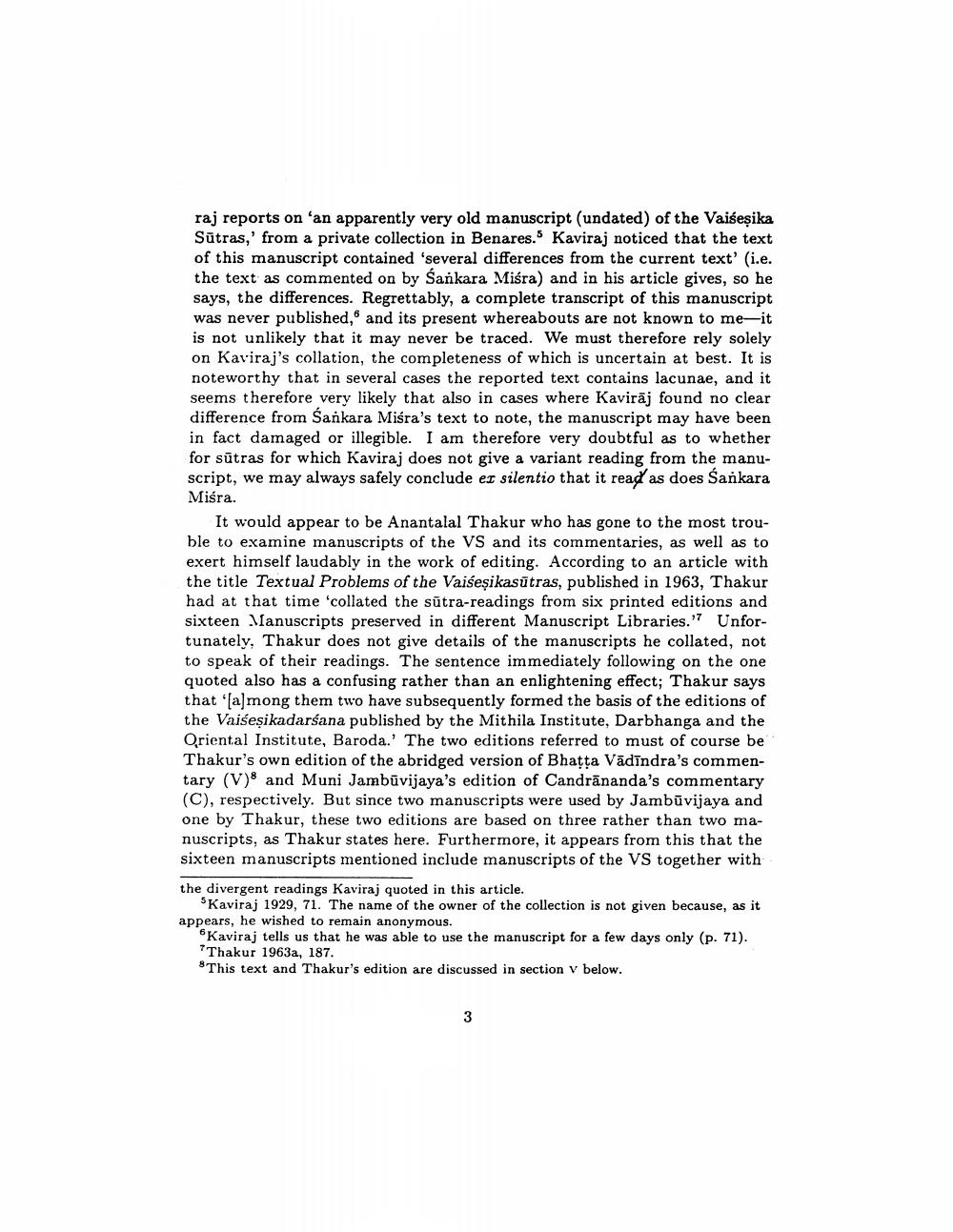Book Title: Notes On Manuscript Transmission Of Vaisesika Sutra And Its Earliest Commentaries Author(s): Harunaga Issacson Publisher: Harunaga Issacson View full book textPage 3
________________ raj reports on 'an apparently very old manuscript (undated) of the Vaišeşika Sūtras,' from a private collection in Benares. Kaviraj noticed that the text of this manuscript contained 'several differences from the current text' (i.e. the text as commented on by Sankara Miśra) and in his article gives, so he says, the differences. Regrettably, a complete transcript of this manuscript was never published, and its present whereabouts are not known to me-it is not unlikely that it may never be traced. We must therefore rely solely on Kaviraj's collation, the completeness of which is uncertain at best. It is noteworthy that in several cases the reported text contains lacunae, and it seems therefore very likely that also in cases where Kaviraj found no clear difference from Sankara Miśra's text to note, the manuscript may have been in fact damaged or illegible. I am therefore very doubtful as to whether for sūtras for which Kaviraj does not give a variant reading from the manuscript, we may always safely conclude es silentio that it read as does Sankara Miśra. It would appear to be Anantalal Thakur who has gone to the most trouble to examine manuscripts of the VS and its commentaries, as well as to exert himself laudably in the work of editing. According to an article with the title Textual Problems of the Vaiseşikasūtras, published in 1963, Thakur had at that time 'collated the sūtra-readings from six printed editions and sixteen Manuscripts preserved in different Manuscript Libraries. Unfortunately, Thakur does not give details of the manuscripts he collated, not to speak of their readings. The sentence immediately following on the one quoted also has a confusing rather than an enlightening effect; Thakur says that among them two have subsequently formed the basis of the editions of the Vaiseșikadarśana published by the Mithila Institute, Darbhanga and the Oriental Institute, Baroda.' The two editions referred to must of course be Thakur's own edition of the abridged version of Bhatta Vādīndra's commentary (V) and Muni Jambūvijaya's edition of Candrānanda's commentary (C), respectively. But since two manuscripts were used by Jambūvijaya and one by Thakur, these two editions are based on three rather than two manuscripts, as Thakur states here. Furthermore, it appears from this that the sixteen manuscripts mentioned include manuscripts of the VS together with the divergent readings Kaviraj quoted in this article. Kaviraj 1929, 71. The name of the owner of the collection is not given because, as it appears, he wished to remain anonymous. Kaviraj tells us that he was able to use the manuscript for a few days only (p. 71). ?Thakur 1963a, 187. 8 This text and Thakur's edition are discussed in section v below.Page Navigation
1 2 3 4 5 6 7 8 9 10 11 12 13 14 15 16 17 18 19 20 21 22 23 24 25 26 27 28 29 30
